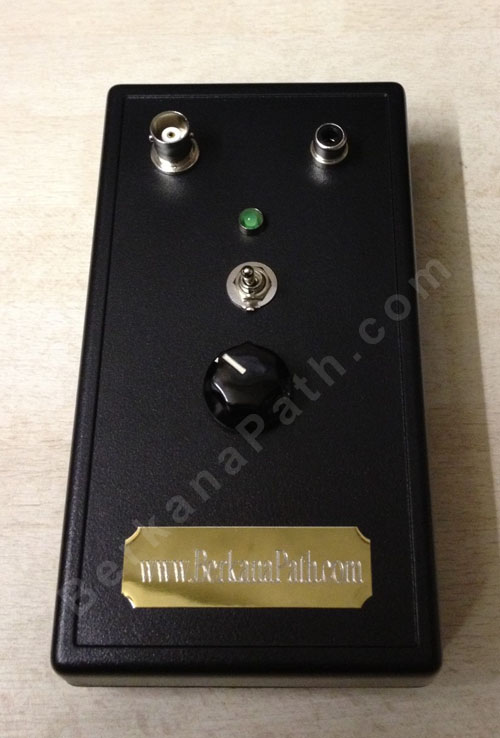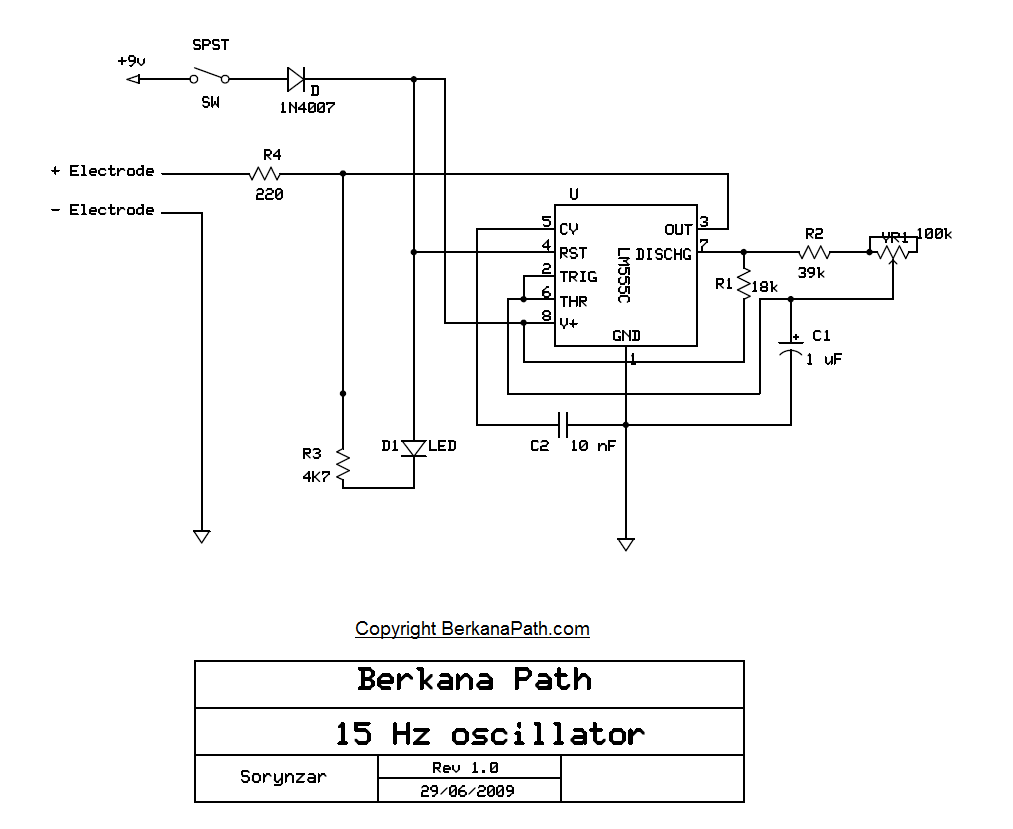The Rife Crane Pad System
This electrode style Rife device know in Rife circles as a PAD system was developed as a commission. It is essentially a modification of a highly effective electronic circuit designed to “Zap” warts, known as the Wart Zapper, and created by Thomas Scarborough which can be found at this link: Wart Zapper
The modification allows for the injection of certain Rife frequencies at the power stage. On a decent oscilloscope the frequency harmonics can be readily observed. Wearing the electrodes the tingling sensation is clearly felt even at the lowest power setting. The power can be adjusted by turning the small Bakelite dial. The setup is full clockwise the the maximum power position which gives a peak voltage of 24-25V depending on the battery voltage levels.
I wont make any health claims here or I’ll end up with a bunch of heavies in suits coming round to my lab and stomping on my toys!
I originally wanted to work with Ken Uzzell’s Frex amp, but found the power using the signal generator was simply too low. His amp works well for the Frex software running through a sound card as you would expect, but it’s simply not good enough for a low power, low voltage signal generator. I managed to amp the power from the signal gen with a power IC, but the breakdown frequency was about 200KHz. What I really need is a full spectrum power amp, if anyone knows where I can source one I’d appreciate an email.


